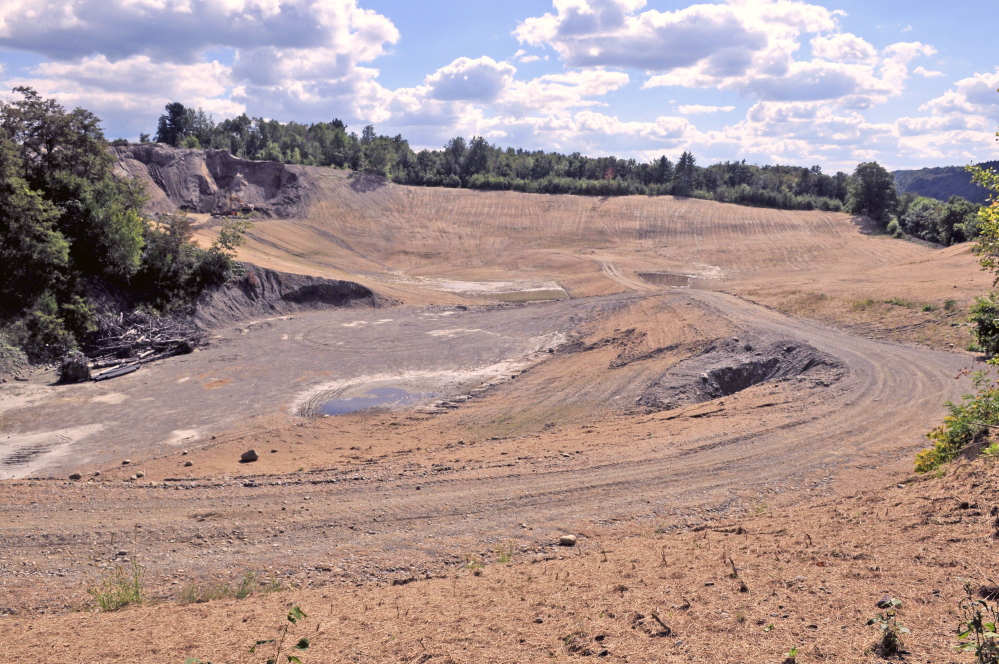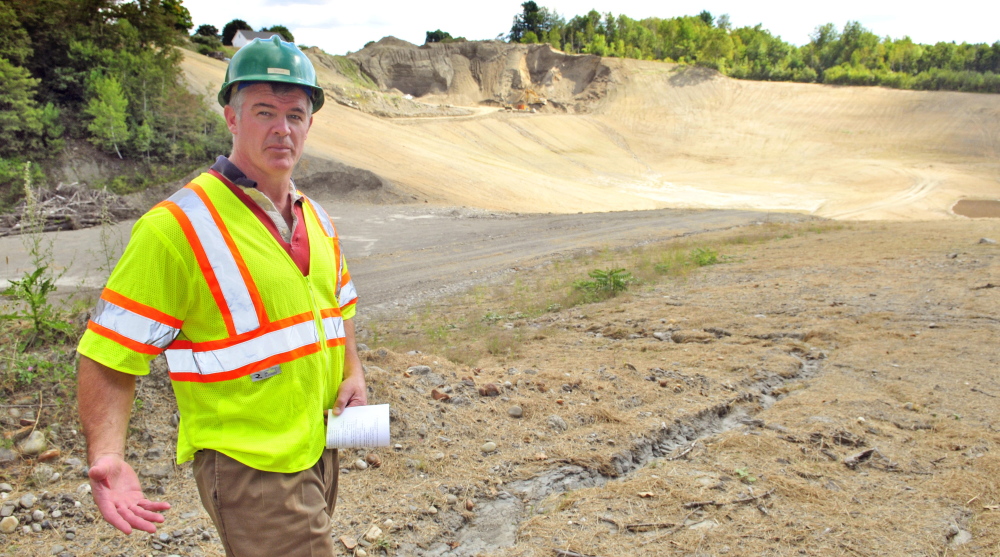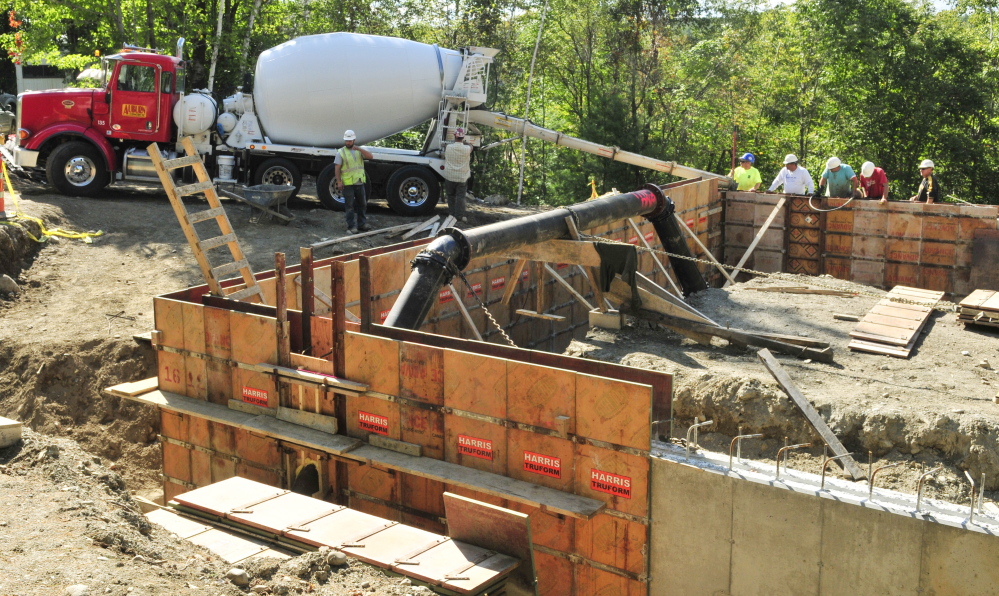AUGUSTA — In the early morning hours of Oct. 7, 2011, a truck carrying almost 4,000 gallons of Nopcote, a chemical used in paper-making, left Interstate 95 just north of the Bond Brook overpass and tipped over, spilling about 400 gallons into a nearby ditch that feeds into the brook.
The spill forced Greater Augusta Utility District officials to shut down all three of the district’s wells, which were nearby and within about 1,000 feet of each other, for fear they could become contaminated.
The incident made it clear the district needed an alternative water source, one that was located in another part of the city and could be used as an emergency backup, said district Superintendent Brian Tarbuck.
After the 2011 incident, two of the wells were turned back on later that day and the third within a few days. Tarbuck said there was no indication the contaminant, which DEP officials said at the time could harm Bond Brook and organisms in it, ever made it into the water supply. So there was no lasting effect of the spill, other than the wake-up call it gave district officials, who have since worked to secure alternative water sources.
Those alternative sources, two new drilled wells on the east side of the Kennebec River that tap into a different aquifer, are under construction now.
The new wells at the end of Sunrise Circle in a gravel pit between the river and Riverside Drive are expected to start flowing drinking water into the system in late winter or early spring.
“It gives us complete redundancy in our water supply,” said Andy Begin, assistant general manager and chief engineer for the Greater Augusta Utility District. “We have an east side and west side supply now.”
The wells and a water treatment facility are being built, together making up an approximately $3.5 million project. They’re in a previously active gravel pit, most of which was owned and mined by local contracting firm MainEx, owned by Mike Chick.
Land purchased for the project included 5.23 acres from Bonenfant Construction for $40,000, 1.03 acres from C.H. Stevenson for $12,500, 4 acres from Michael and Claire Foss for $24,000 and 10.2 acres from MainEx in 2014 for $334,000.
However, the district paid MainEx a total of $712,000 — $334,000 for the land and another $378,000 for the firm to reclaim the pit. That’s work the district would have had to pay someone to do anyway to be able to use the land, Tarbuck said.
He said the MainEx land had a higher sales price than the Bonenfant land because MainEx still was mining the pit actively and it had more value in the sand, gravel and other materials than the Bonenfant site, which, Tarbuck said, already had been “pretty well mined out.”
Tarbuck said the project will not affect water rates, as the work will be paid for under the current rates. It will be paid for with a combination of cash and a 20-year bond.
Before the new wells become active, the district has two potential sources to turn to for water beyond its three wells and millions of gallons of water stored in tanks and within the system.
One is a backup system that would allow the district to receive water from the neighboring Hallowell Water District, and another is a shuttered former water filtration plant at the district’s prior water source, Carleton Pond in Winthrop.
However, Tarbuck said the Hallowell connection could provide the district only about 500,000 gallons of water a day, short of the 1.7 million gallons district customers use in a typical day.
The Carleton Pond treatment plant, built at a cost of $12 million, closed and was relegated to backup status in 2004 when district officials decided to draw water instead from the three wells, which were drilled in 1955 and 1965. Because of a cheaper treatment process for well water, water could be taken from the wells for about $500,000 less a year than from Carleton Pond.
“That wasn’t an easy decision to close an 11-year-old plant, but it would have been even harder to justify a half-million dollars more a year to keep it online,” Tarbuck said.
Tarbuck said they’re not sure, exactly, how long it would take to get the Carleton Pond filtration plant up and running again, but it would be too long to rely on it for drinking water in an emergency.
“When we had the (truck spill chemicals on the Interstate in 2011), we had a conversation about how long it would take to restart the water filtration plant,” Tarbuck said. “It could take a week, but it might take a month to make drinking-quality water. We’re not sure. The (water district board of trustees) said we really ought to find another drinking water source.”
Tarbuck said the district trustees could decide someday to sell the Carleton plant and land the district owns surrounding Carleton Pond, but the district now sells wood from the property, which brings in about $50,000 a year, more than enough to pay the taxes on the parcel, and there are no current plans to sell it.
The two new wells together will be able to pump 2 million gallons a day, more than the 1.7 million gallons district customers use in a typical day. All five wells together should be able to pump about 3.5 million gallons of water a day, Tarbuck said.
Tarbuck said the district has about 10 million gallons of storage capacity for water.
Begin noted the two new wells won’t be in use all the time. The district will switch back and forth between them to balance out their use and wear.
Water from the new wells, Tarbuck noted, will go through a bevy of tests to make sure it is safe to drink before it starts flowing into the distribution pipes. He said the content of the water from the wells appears to be similar to water from the district’s other wells, which should simplify its treatment. However, Tarbuck said some customers on Riverside Drive might notice a slight difference in the taste of their water when the new wells are flowing into the system.
The site was selected through a multi-year process that included looking at several other locations. Begin said gravel pits were looked at specifically, because they are known to be the locations of aquifers. Test drilling was done to make sure the site could provide a sufficient quality and quantity of water.
The treatment plant is at the end of Sunrise Circle, next to a residential neighborhood. Tarbuck said the plant is not expected to produce much noise except when a backup generator that will be installed there is in use in an emergency or during brief weekly testing of the generator.
The district also is having a new water tank built near the former Hodgkins Middle School in Augusta at a cost of about $2.4 million. The tank will take the place of four older tanks, which will be torn down.
Keith Edwards — 621-5647
kedwards@centralmaine.com
Twitter: @kedwardskj
Send questions/comments to the editors.






Comments are no longer available on this story